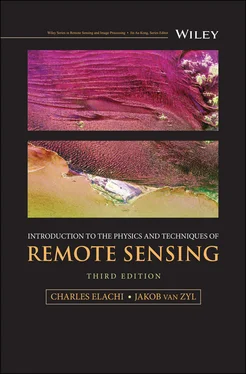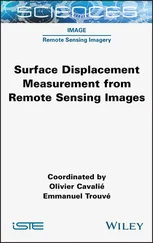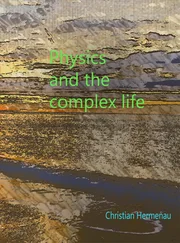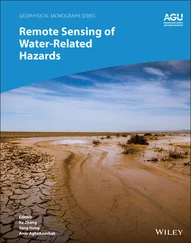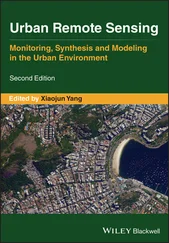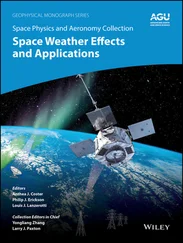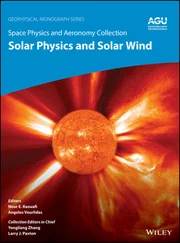1 Cover
2 Series Page WILEY SERIES IN REMOTE SENSING Jin Au Kong, Editor Asrar • THEORY AND APPLICATIONS OF OPTICAL REMOTE SENSING Crane • ELECTROMAGNETIC WAVE PROPAGATION THROUGH RAIN Curlander and McDonough • SYNTHETIC APERTURE RADAR: SYSTEMS AND SIGNAL PROCESSING Elachi and van Zyl • INTRODUCTION TO THE PHYSICS AND TECHNIQUES OF REMOTE SENSING, Second Edition Haykin, Lewis, Raney, and Rossiter • REMOTE SENSING OF SEA ICE AND ICEBERGS Haykin and Steinhardt • ADAPTIVE RADAR DETECTION AND ESTIMATION Janssen • ATMOSPHERIC REMOTE SENSING BY MICROWAVE RADIOMETRY Landgrebe • SIGNAL THEORY METHODS IN MULTISPECTRAL REMOTE SENSING Liang • QUANTITATIVE REMOTE SENSING OF LAND SURFACES Maffett • TOPICS FOR A STATISTICAL DESCRIPTION OF RADAR CROSS SECTIONS Steinberg and Subbaram • MICROWAVE IMAGING TECHNIQUES Szekielda • SATELLITE MONITORING OF THE EARTH Tsang, Kong, and Ding • SCATTERING OF ELECTROMAGNETIC WAVES: THEORIES AND APPLICATIONS Tsang, Kong, Ding, and Ao • SCATTERING OF ELECTROMAGNETIC WAVES: NUMERICAL SIMULATIONS Tsang and Kong • SCATTERING OF ELECTROMAGNETIC WAVES: ADVANCED TOPICS Udd • FIBER OPTIC SMART STRUCTURES
3 Title Page Introduction to the Physics and Techniques of Remote Sensing Third Edition Charles Elachi and Jakob van Zyl California Institute of TechnologyPasadena, California, USA
4 Copyright Page
5 Dedication Page
6 Preface
7 1 Introduction 1.1 Types and Classes of Remote Sensing Data 1.2 Brief History of Remote Sensing 1.3 Remote Sensing Space Platforms 1.4 Transmission Through the Earth and Planetary Atmospheres References and Further Reading
8 2 Nature and Properties of Electromagnetic Waves2.1 Fundamental Properties of Electromagnetic Waves 2.2 Nomenclature and Definition of Radiation Quantities 2.3 Generation of Electromagnetic Radiation 2.4 Detection of Electromagnetic Radiation 2.5 Interaction of Electromagnetic Waves with Matter: Quick Overview 2.6 Interaction Mechanisms Throughout the Electromagnetic Spectrum Exercises References and Further Reading
9 3 Solid Surfaces Sensing in the Visible and Near Infrared 3.1 Source Spectral Characteristics 3.2 Wave–Surface Interaction Mechanisms 3.3 Signature of Solid Surface Materials 3.4 Passive Imaging Sensors 3.5 Types of Imaging Systems 3.6 Description of Some Visible/Infrared Imaging Sensors 3.7 Active Sensors 3.8 Surface Sensing at Very Short Wavelengths 3.9 Image Data Analysis Exercises References and Further Reading
10 4 Solid‐Surface Sensing: Thermal Infrared 4.1 Thermal Radiation Laws 4.2 Heat Conduction Theory 4.3 Effect of Periodic Heating 4.4 Use of Thermal Emission in Surface Remote Sensing 4.5 Use of Thermal Infrared Spectral Signature in Sensing 4.6 Thermal Infrared Sensors Exercises References and Further Reading
11 5 Solid‐Surface Sensing: Microwave Emission 5.1 Power‐Temperature Correspondence 5.2 Simple Microwave Radiometry Models 5.3 Applications and Use in Surface Sensing 5.4 Description of Microwave Radiometers 5.5 Examples of Developed Radiometers Refevrences and Further Reading
12 6 Solid‐Surface Sensing 6.1 Surface Interaction Mechanism 6.2 Basic Principles of Radar Sensors 6.3 Imaging Sensors: Real Aperture Radars 6.4 Imaging Sensors: Synthetic Aperture Radars 6.5 Nonimaging Radar Sensors: Scatterometers 6.6 Nonimaging Radar Sensors: Altimeters 6.7 Nonconventional Radar Sensors 6.8 Subsurface Sounding References and Further Reading
13 7 Ocean Surface Sensing 7.1 Physical Properties of the Ocean Surface 7.2 Mapping of the Ocean Topography 7.3 Surface Wind Mapping 7.4 Ocean Surface Imaging Exercises References and Further Reading
14 8 Basic Principles of Atmospheric Sensing and Radiative Transfer 8.1 Physical Properties of the Atmosphere 8.2 Atmospheric Composition 8.3 Particulates and Clouds 8.4 Wave Interaction Mechanisms in Planetary Atmospheres 8.5 Optical Thickness 8.6 Radiative Transfer Equation 8.7 Case of a Nonscattering Plane Parallel Atmosphere 8.8 Basic Concepts of Atmospheric Remote Sounding Exercises References and Further Reading
15 9 Atmospheric Remote Sensing in the Microwave Region 9.1 Microwave Interactions with Atmospheric Gases 9.2 Basic Concept of Downlooking Sensors 9.3 Basic Concept for Uplooking Sensors 9.4 Basic Concept for Limblooking Sensors 9.5 Inversion Concepts 9.6 Basic Elements of Passive Microwave Sensors 9.7 Surface Pressure Sensing 9.8 Atmospheric Sounding by Occultation 9.9 Microwave Scattering by Atmospheric Particles 9.10 Radar Sounding of Rain 9.11 Radar Equation for Precipitation Measurement 9.12 The Tropical Rainfall Measuring Mission (TRMM) 9.13 Rain Cube 9.14 CloudSat 9.15 Cassini Microwave Radiometer 9.16 Juno Microwave Radiometer (MWR) References and Further Reading
16 10 Millimeter and Submillimeter Sensing of Atmospheres 10.1 Interaction with Atmospheric Constituents 10.2 Downlooking Sounding 10.3 Limb Sounding 10.4 Elements of a Millimeter Sounder 10.5 Submillimeter Atmospheric Sounder Exercises References and Further Reading
17 11 Atmospheric Remote Sensing in the Visible and Infrared 11.1 Interaction of Visible and Infrared Radiation with the Atmosphere 11.2 Downlooking Sounding 11.3 Limb Sounding 11.4 Sounding of Atmospheric Motion 11.5 Laser Measurement of Wind 11.6 Atmospheric Sensing at Very Short Wavelengths Exercises References and Further Reading
18 12 Ionospheric Sensing 12.1 Properties of Planetary Ionospheres 12.2 Wave Propagation in Ionized Media 12.3 Ionospheric Profile Sensing by Topside Sounding 12.4 Ionospheric Profile by Radio Occultation References and Further Reading
19 Appendix A: Use of Multiple Sensors for Surface Observations
20 Appendix B: Summary of Orbital Mechanics Relevant to Remote Sensing B.1 Circular Orbits B.2 Elliptical Orbits B.3 Orbit Selection Exercises
21 Appendix C: Simplified Weighting FunctionsC.1 Case of Downlooking Sensors (Exponential Atmosphere) C.2 Case of Downlooking Sensors (Linear Atmosphere) C.3 Case of Upward‐Looking Sensors
22 Appendix D: Compression of a Linear FM Chirp Signal
23 Index
24 End User License Agreement
1 Chapter 1 Table 1.1 Types of remote sensing data.
2 Chapter 2 Table 2.1 Radiation quantities. Table 2.2 Wave‐matter interaction mechanisms across the electromagnetic spect...
3 Chapter 3 Table 3.1 Solar irradiance at the distance of the different planets. Table 3.2 Interaction mechanisms. Table 3.3 Comparison of different imaging systems. Table 3.4 Enhanced thematic mapper plus characteristics. Table 3.5 Significant ETM+ parameters. Table 3.6 ASTER characteristics.Table 3.7 Daughter products of 238 U.
4 Chapter 4Table 4.1 Thermal properties of some materials.Table 4.2 Heat capacity mapping radiometer summary data sheet.Table 4.3 AVHRR instrument parameters.
5 Chapter 5Table 5.1 Microwave temperature of three representative types of material wit...Table 5.2 SMMR instrument characteristics (nominal).Table 5.3 AMSR‐E instrument characteristics.
6 Chapter 6Table 6.1 Spaceborne scatterometer parameters.Table 6.2 Measured values for a forested area in the Shasta Trinity National ...
7 Chapter 7Table 7.1 Magnitude of ocean surface perturbations.Table 7.2 Characteristics of some of the spaceborne infrared and microwave ra...
8 Chapter 8Table 8.1 Some properties of planetary atmospheres.
9 Chapter 9Table 9.1 Reflectivity in dBZ versus rainrate.
10 Chapter 10Table 10.1 Transitions of water below 800 GHz.Table 10.2 Molecular transitions of interest and importance to astrophysics a...
11 Chapter 11Table 11.1 Characteristics of some of the HIRS channels.Table 11.2 Key characteristics of the ATMOS sensor.Table 11.3 Ultraviolet spectral lines of common atoms and molecules in planet...
Читать дальше
